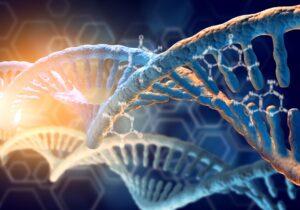Weather patterns are changing, so are our immune systems.
Do you suffer with?
- Sneezing
- Asthma
- Skin rashes
- Itchy eyes
You may be a victim of the crazy weather we are experiencing in the Southern Hemisphere. Albeit that we are out of the spring hay fever season, our summer’s present themselves with extreme heat, rain and humidity.
The problem lies with the way the immune system copes with these allergens. As humidity increases and the flash flooding happens, the pollen swells, wing picks up and we inhale the inflated allergens which not only manifests as hay fever but aggravates into wheeziness, difficulty in breathing and asthma.
According to the Australasian Society of clinical immunology, allergies have more than doubled in the last decade. Around one in three people will develop allergies sometime during their life. Food allergies occurs in one in 20 children and one in 100 adults.
What are Allergens?
Allergens may be pollen, fumes, pet hair or foods that produce an immune reaction or inflammation within our defense mechanism called the immune system. An allergen is an antigen stimulating and Ig response and release of histamine from the mast cells of our defense mechanism within the blood. Inflammation of mast cells and macrophages manifests as itching, sneezing, runny nose, hives, skin rashes, asthma or severe anaphylaxis.
Testing for Allergies
Allergies, sensitivities, and intolerances to food, environmental pollutants, solvents, food additives and preservatives can be tested by:
- Ig testing: IgG, IgA and IgE antibodies are tested in a blood sample. IgG in simplistic terms represents intolerance, IgA represents sensitivity and IgE represents allergy.
- ALCAT testing: measures the degree of information of white blood cells upon exposure to an allergen.
Testing for allergies have advanced to establish toxicities and reactions to:
- Foods ranging from Western, Asian or vegetarian foods, incorporating differentiation between K casein and whey in dairy, and gluten and gliadin in grains.
- Inhalants such as grasses, dust mite, moulds, pet hair
- Environmental pollutants like benzene, xylene and toluene
- Volatile solvents like PCBs and organophosphates
- phthalates and parabens
- chlorinated pesticides like DDT and dieldrin
- Polychlorinated biphenyls like PCBs
- organophosphates like DMTP and DETP
- bisphenol A like BPA and triclosan
Conventional Treatment approaches
Antihistamines counter the allergic histamine response and reduce histamine release to stop allergy symptoms. Antihistamines work to relieve the symptoms of allergies, nasal congestion, hayfever, and food allergies.
The older generation antihistamines like dexchlorpheniramine, although effective, come with side effects ranging from dry mouth, drowsiness, blurred vision to nausea and vomiting.
The new generation antihistamines like cetirizine or loratadine are used extensively to manage allergies.
Natural treatment approaches
Natural treatments work at improving the immune system, and reducing symptoms of allergy.
Herbs such as al busier have been used traditionally to relieve the symptoms of allergies, hayfever and nasal congestion by stabilizing mast cells and inhibiting a histamine response. Quercetin, a bioflavonoid has been shown to inhibit leukotriene synthesis and histamine release. Perrilla has been shown in studies to inhibit the release of histamine from ourselves and IgE and TNF alpha. These ingredients down regulate inflammatory cytokines which are responsible for an inflammatory immune reaction.
Herbal intervention does not band aid symptoms; they support the immune system, relieve symptoms and prevent further exacerbations of allergies. In addition, the use of a probiotic, Lactobacillus Rhamnosis has been shown to promote immune regulation with in the gut associated lymphoid tissue (GALT) and promotes anti-inflammatory healing.




